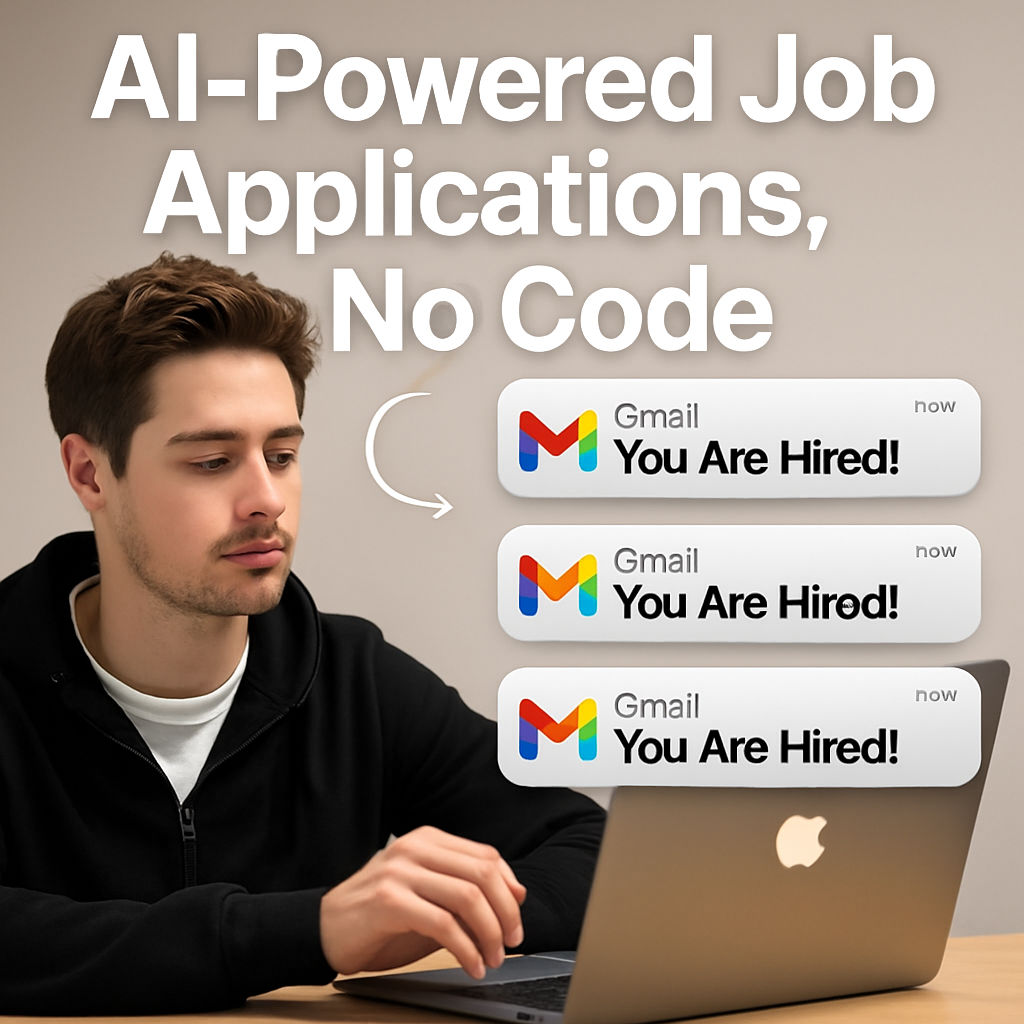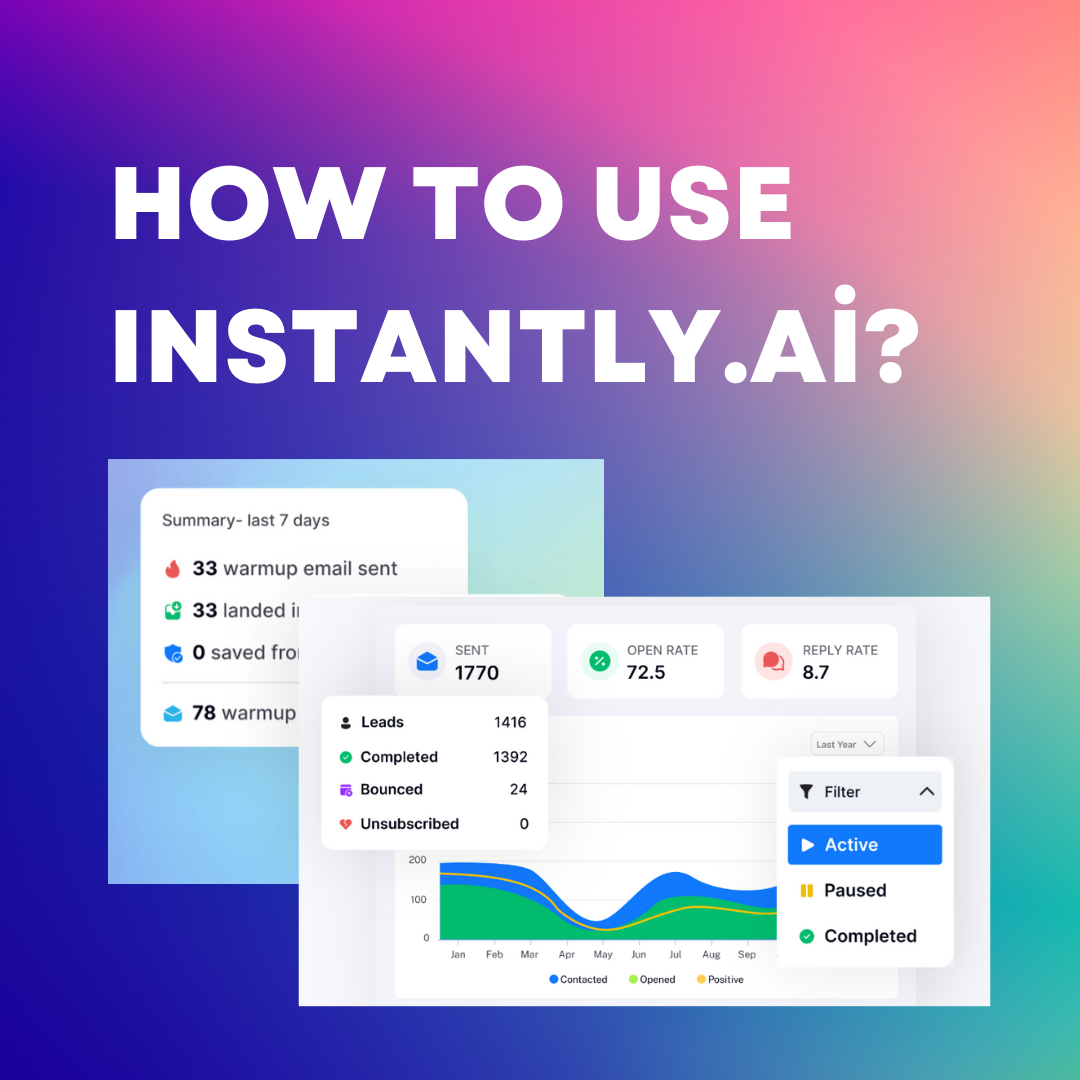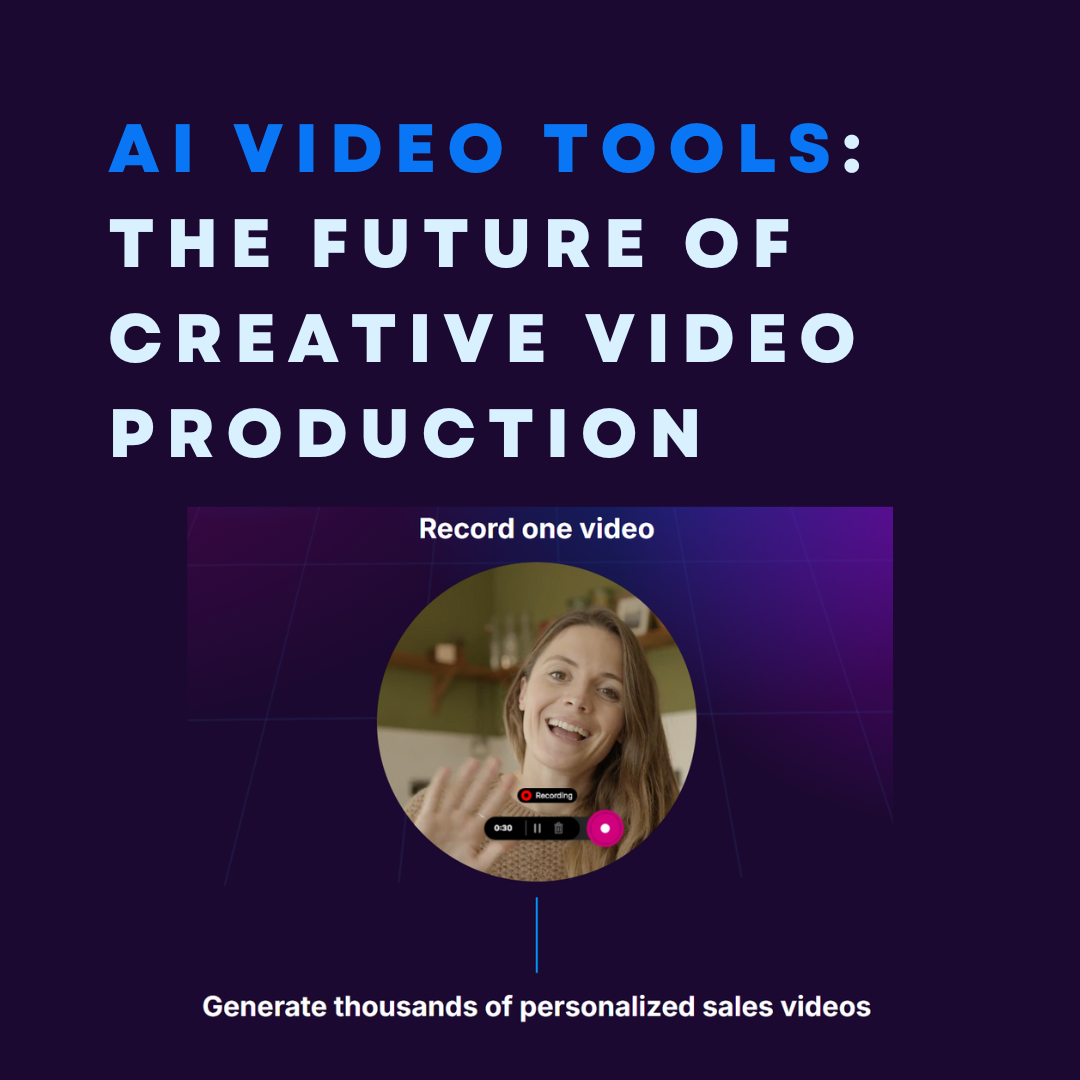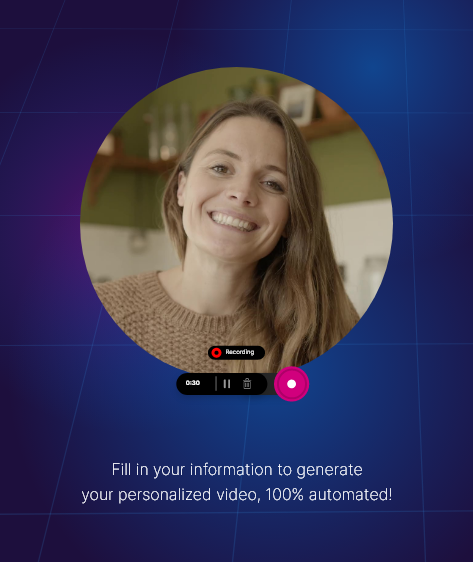In today’s fiercely competitive job market, harnessing AI to streamline your job application process can be a total game-changer. Imagine applying to a thousand jobs in the time it normally takes to send out just ten! Through a live demonstration, let’s explore how you can build a fully automated no-code AI job application system—from scraping jobs on LinkedIn, customizing your resume per posting, to organizing and emailing decision-makers for lightning-fast outreach. Whether you’re a tech enthusiast, recent graduate, or freelance professional, this scalable method can radically boost your job hunt efficiency while letting you stand out.
Based on the original video:
Unlocking the Power of an AI Job Application System
The primary topic here is building an automated AI job application system—one that scrapes jobs, customizes each resume, and scales outreach effortlessly. This approach leverages no-code tools and existing APIs, making the process accessible to anyone, regardless of technical experience.
Key benefits of automating your job search include:
- Applying to hundreds or thousands of relevant jobs in a fraction of the usual time
- Creating hyper-personalized resumes that increase your chances of being noticed
- Streamlining organization, tracking, and follow-up
- Highlighting your tech-savvy, creativity, and initiative to potential employers
Step 1: Preparing Your Resume Template for AI Customization
The foundation of the system is a flexible resume template. Instead of relying on static designs, you create a simple, mostly text-based version in a Google Doc. This allows the AI to easily parse the document and rewrite its sections in response to specific job descriptions.
Best Practices for Resume Templates
- Keep formatting light — use headings (like H2 or H3) and basic bold or italics where necessary
- Remove complex visuals, tables, or excessive styling that may hinder parsing
- Keep resume sections clearly labeled (like “Professional Summary,” “Skills,” “Work Experience”)
Once the template is ready, upload it to Google Drive. The automation system will later access its content to customize for each application.
Step 2: Scraping Relevant Job Postings
A critical piece of this automated system is efficiently scraping targeted job postings from platforms like LinkedIn. Rather than building a scraper from scratch—since major user-generated content platforms constantly update their anti-scraping defenses—it’s better to use reputable marketplace APIs or prebuilt scraping tools.
Choosing the Right Job Scraper
Marketplaces like Apify offer specialized LinkedIn job scraper “actors” maintained by developers. These tools allow you to:
- Scrape hundreds or thousands of job listings based on your custom search preferences (location, keyword, company size, remote/on-site, etc.)
- Access crucial job details—including benefits, company descriptions, and contact info
- Filter jobs by latest postings, salary range, or remote options
For instance, let’s say you’re seeking remote, automation-related tech roles in the US posted within the past week. By customizing the search query, the AI system collects a fresh pool of matching roles—scaling your potential reach far beyond manual searches.

Step 3: Integrating Google Drive and Retrieving Resume Template Data
With your resume template stored in Google Drive, the next step is connecting your automation platform (e.g., using NAN, a no-code automation tool) to Google’s APIs. This is done by configuring credentials in the Google Cloud Console and enabling the necessary document permissions for workflow access.
After successful connection, the workflow fetches the plain text or structured content of your resume. Although some formatting may get lost in the transfer, AI can reliably reconstruct section headings and structure during customization.
Handling Resume Formatting Issues
If the system doesn’t reproduce your exact layout, don’t worry. Modern AI is quite adept at inferring meaning from basic text. You can instruct the system to regenerate format, as long as section titles and core content remain clear.
Step 4: Filtering Job Listings with AI
Applying to every scraped job isn’t practical or fruitful—filtering roles ensures your applications remain relevant and greatly increases your chances of landing interviews.
AI-Powered Job Filtering Techniques
Filtering can be performed in two main ways:
- Procedural (Keyword-Based): Old-school filtering using text-matching rules
- Flexible (AI Semantic Filtering): Feeding job descriptions and your skill set into a language model (GPT-4) to infer genuine fit, even when keywords differ
In our approach, create a large, up-to-date list of your skills, experience, and preferred roles. Feed this, along with each job description, into an AI prompt. The model returns a verdict—“true” if you’re a fit, “false” otherwise—in a predictable JSON format for downstream workflows.
Step 5: Customizing Resumes for Each Application with AI
Now comes the automation magic: feeding both the job’s description and your resume template into an AI language model, such as GPT-4. The AI tailors your resume’s content to the exact requirements and phrasing of each unique job listing.
Why Customized Resumes Matter
By matching keywords, responsibilities, and required skills, your application is much more likely to pass automated Applicant Tracking Systems (ATS) and catch hiring managers’ attention. Even subtle tweaks—such as emphasizing different projects, technical skills, or leadership traits—can massively improve interview conversion rates.
The final output is then converted into a neatly formatted HTML or PDF file and saved in your organized Google Drive folder.

Step 6: Smart Email Outreach to Decision-Makers
Automated bulk applications often end up lost in HR piles. To maximize your odds, this workflow directly contacts decision-makers using a tailored, compelling email pitch—and attaches each optimized resume.
Automated Email Draft Creation Process
The system pulls the company website from the job listing, scrapes for key contact details (e.g., hiring manager, department head), and checks for valid emails. It then creates and saves a Gmail draft personalized for each recipient.
Effective outreach messages highlight:
- Your direct interest in the specific role
- How you custom-built an AI system to automate job applications (“show, don’t just tell” your tech skills!)
- A succinct pitch about what you offer and openness for a conversation
- Your tailored resume as an attachment
By taking this proactive approach, you demonstrate real initiative and stand apart from the crowd.
Incremental Testing and Debugging: The Automation Mindset
Building a robust AI job application system isn’t a single-step process. Frequent, incremental testing at each workflow juncture keeps errors limited and makes troubleshooting easy. For example:
- Check API responses and credentials before chaining steps
- Validate outputs after each automation run
- Pin successful data responses to avoid redundant scraping in future test runs (saving credits, time, and mental energy)
This agile mindset allows for rapid iteration, adapting to bugs or platform changes without backtracking or redoing entire builds.
Connecting the Automation Workflow with APIs
Key to this system’s flexibility is the ability to call external APIs—both for scraping jobs and sending emails. Well-documented APIs, like those from Apify or Google, streamline integration. Look for authentication instructions (such as bearer tokens) and example “curl” calls to quickly set up HTTP requests within your automation tool.
Practical Tips for API Workflows
- Identify required API endpoints for scraping, filtering, or document manipulation
- Use JSON schema for passing configuration between services safely
- Rotate or refresh credentials regularly for security
Most no-code automation platforms support this “glue code” approach, letting you link data between Google Drive, job scraping APIs, OpenAI, and Gmail in one visual workflow—no programming experience needed.

Pro Tips for Maximizing Scale and Personalization
Want to truly push your application throughput to the next level? Consider these strategies:
- Batch Your Processes: Scrape and filter jobs in large batches, then automatically loop over each for resume customization and outreach
- Expand Asset Customization: Go beyond resumes—customize cover letters, project portfolios, or elevator pitch videos
- Deploy A/B Testing: Send different resume or email versions to measure what earns the best response rates
- Track Everything: Use platforms like Google Sheets, Airtable, or dedicated CRMs to log applied jobs, contact attempts, response rates, and interview conversions
- Keep It Honest: Build “fail gracefully” features, alerting you if email finding or document conversion fails—so you can intervene or retry
Real-World Example: AI-Driven Tech Job Hunt
Suppose you’re specifically targeting roles such as “AI Product Manager” or “Automation Specialist.” By configuring your search filters and AI skills database accordingly, you ensure only the most relevant job listings pass through to the resume customization stage. The result? Each application speaks to the exact technical and business needs of the employer, dramatically increasing callback chances.
If you’re new to YouTube marketing or want to grow your small business channel with strategic consistency (beyond just hoping for viral hits), check out the helpful resource: YouTube Marketing Tips for Small Biz Growth. It offers actionable insights for trust-building content that generates leads—paralleling the persistence and precision of AI-automated outreach for job seekers.
Common Pitfalls (and How to Dodge Them)
Even the best AI job-application systems are prone to bumps—but knowing potential pitfalls helps you debug and optimize faster:
- API rate limits and quotas: Always check for request caps on scraping or emailing services. Batch smartly and monitor usage.
- Formatting drift: Accept that automated resume reformatting won’t be pixel-perfect—prioritize clear, compelling content over rigid structure.
- Contact enrichment failures: Sometimes a company won’t publish decision-maker emails. Flag these for manual application or alternative outreach.
- False positives in AI filtering: Periodically review filtered-out jobs to ensure your skills database and prompts remain up to date and accurate.
Can You Apply This Automation Framework Elsewhere?
Absolutely! The modular nature of no-code AI automation means you’re not limited to resume customization. You can adapt this framework to automate:
- Personalized outbound sales prospecting
- Lead qualification and business development
- Applying to scholarships, grants, or event speaking slots
- Automating client onboarding communications
The key is identifying repetitive, high-STAKES communication processes where personalization and velocity both pay off.
Frequently Asked Questions (FAQ)
How does the AI customize my resume for each job application?
The AI parses both your resume template and the specific job description, rewriting your resume sections to emphasize relevant skills, experience, and keywords that match the job’s requirements—substantially increasing your chances of getting noticed.
Do I need coding skills to build this automated job application system?
No coding is required. The workflow is entirely no-code, using drag-and-drop automation tools and well-documented APIs. Step-by-step instructions and live debugging make it accessible for beginners.
Is scraping jobs from LinkedIn or other sites allowed?
Most major platforms discourage or limit mass scraping in their terms of service. Using reputable third-party scraping providers helps manage compliance and reduce risk. Always be mindful of each platform’s policies and best practices.
Can I use this system to apply for non-tech jobs?
Yes! While this guide focuses on tech or AI roles, you can adapt the filtering, template, and outreach process to suit virtually any industry or job type. Update your skills database and resume sections accordingly for best results.
How do I track which jobs I’ve applied to and manage follow-ups?
Your AI system can be connected to tools like Google Sheets or Airtable to log each job, application date, contact info, and follow-up status, enabling structured tracking and improving your overall job search effectiveness.









